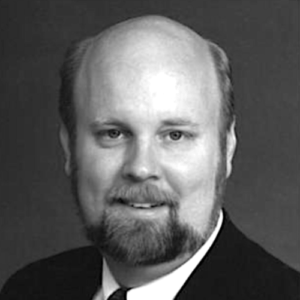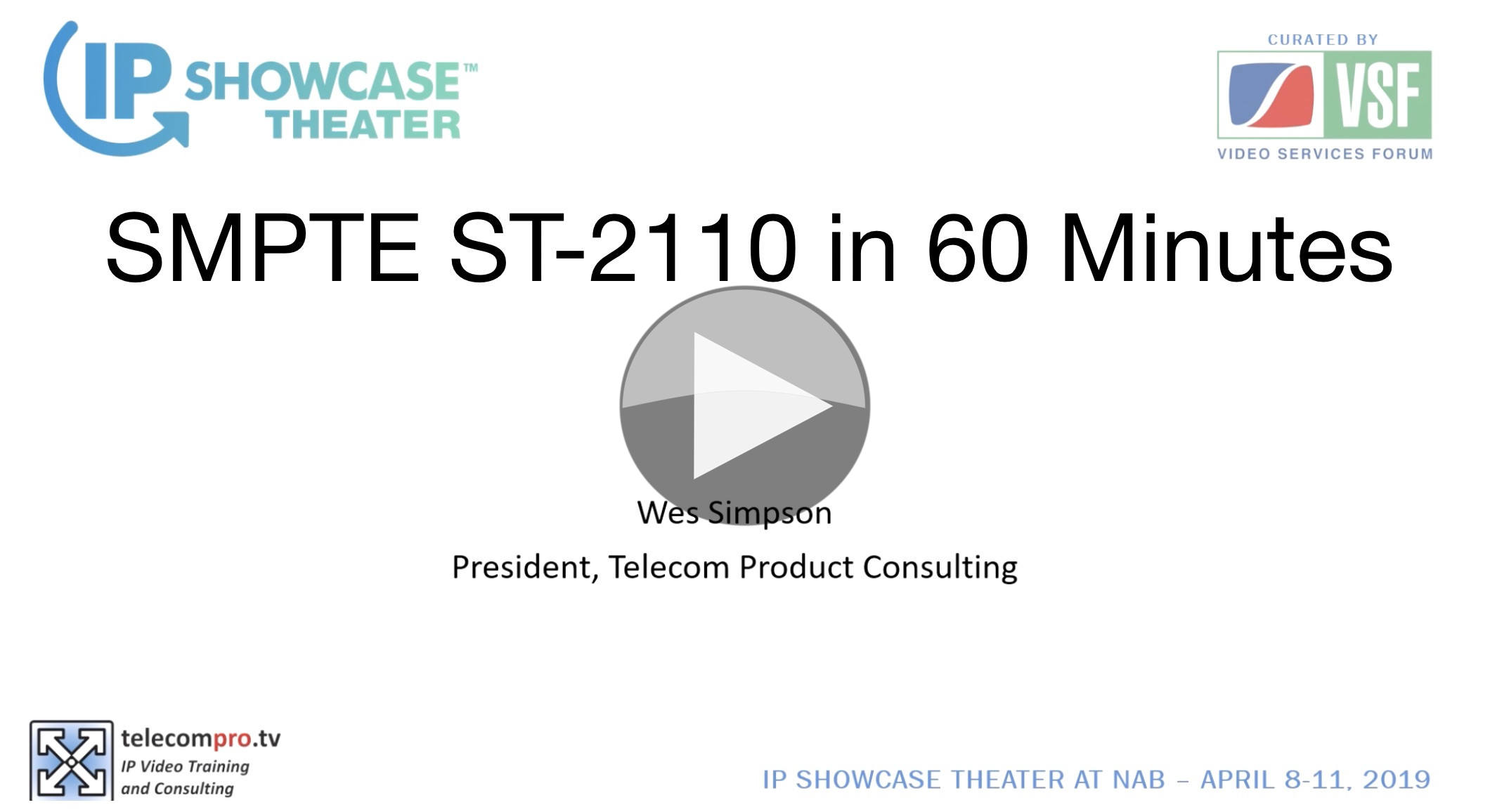SMPTE ST 2110 is a growing suite of standards detailing uncompressed media transport over networks. Now at 8 documents, it’s far more than just ‘video over IP’. This talk looks at the new ways that video can be transported, dealing with PTP timing, creating ‘SDPs’ and is a thorough look at all the documents.
Building on this talk from Ed Calverley which explains how we can use networks to carry uncompressed video, Wes Simpson goes through all the parts of the ST 2110 suite explaining how they work and interoperate as part of the IP Showcase at NAB 2019.
Wes starts by highlighting the new parts of 2110, namely the overview document which gives a high level overview of all the standard docs, the addition of compressed bit-rate video carriage and the recommended practice document for splitting a single video and sending it over multiple links; both of which are detailed later in the talk.
SMPTE ST 2110 is fundamentally different, as highlighted next, in that it splits up all the separate parts of the signal (i.e. video, audio and metadata) so they can be transferred and processed separately. This is a great advantage in terms of reading metadata without having to ingest large amounts of video meaning that the networking and processing requirements are much lighter than they would otherwise be. However, when essences are separated, putting them back together without any synchronisation issues is tricky.
ST 2110-10 deals with timing and knowing which packets of one essence are associated with packets of another essence at any particular point in time. It does this with PTP, which is detailed in IEEE 1588 and also in SMPTE ST 2059-2. Two standards are needed to make this work because the IEEE defined how to derive and carry timing over the network, SMPTE then detailed how to match the PTP times to phases of media. Wes highlights that care needs to be used when using PTP and AES67 as the audio standard requires specific timing parameters.
The next section moves into the video portion of 2110 dealing with video encapsulation on the networks pixel grouping and the headers needed for the packets. Wes then spends some time walking us through calculating the bitrate of a stream. Whilst for most people using a look-up table of standard formats would suffice, understanding how to calculate the throughput helps develop a very good understanding of the way 2110 is carried on the wire as you have to take note not only of the video itself (4:2:2 10 bit, for instance) but also the pixel groupings, UDP, RTP and IP headers.
Timing of packets on the wire isn’t anything new as it is also important for compressed applications, but it is of similar importance to ensure that packets are sent properly paced on wire. This is to say that if you need to send 10 packets, you send them one at a time with equal time between them, not all at once right next to each other. Such ‘micro bursting’ can cause problems not only for the receiver which then needs to use more buffers, but also when mixed with other streams on the network it can affect the efficiency of the routers and switches leading to jitter and possibly dropped packets. 2110-21 sets standards to govern the timing of network pacing for all of the 2110 suite.
Referring back to his warning earlier regarding timing and AES67, Wes now goes into detail on the 2110-30 standard which describes the use of audio for these uncompressed workflows. He explains how the sample rates and packet times relate to the ability to carry multiple audios with some configurations allowing 64 audios in one stream rather than the typical 8.
‘Essences’, rather than media, is a word often heard when talking about 2110. This is an acknowledgement that metadata is just as important as the media described in 2110. It’s sent separately as described by 2110-40. Wes explains the way captions/subtitles, ad triggers, timecode and more can be encapsulated in the stream as ancillary ‘ANC’ packets.
2110-22 is an exciting new addition as this enables the use of compressed video such as VC-2 and JPEG-XS which are ultra low latency codecs allowing the video stream to be reduced by half, a quarter or more. As described in this talk the ability to create workflows on a single IP infrastructure seamlessly moving into and out of compressed video is allowing remote production across countries allowing for equipment to be centralised with people and control surfaces elsewhere.
Noted as ‘forthcoming’ by Wes, but having since been published, is RP 2110-23 which adds back in a feature that was lost when migrating from 2022-6 into 2110 – the ability to send a UHD feed as 4x HD feeds. This can be useful to allow for UHD to be used as a production format but for multiviewers to only need to work in HD mode for monitoring. Wes explains the different modes available. The talk finishes by looking at RTP timestamps and SDPs.
Watch now!
The slides for this talk are available here
Speakers
 |
Wes Simpson President, Telecom Product Consulting |


